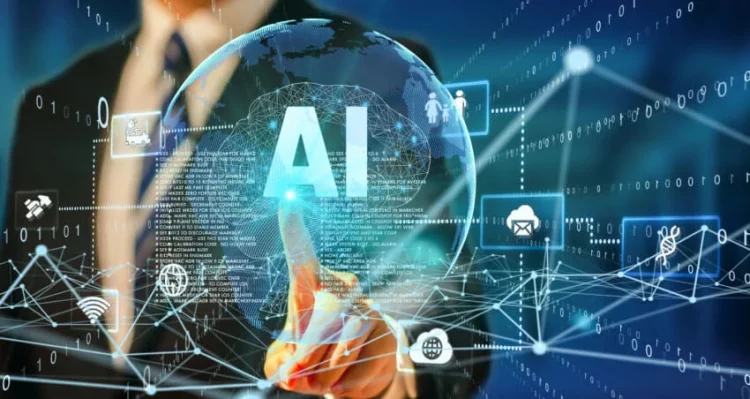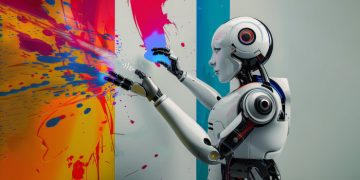The story of work is the story of human adaptation. Every technological shift, from the plow to the assembly line to the personal computer, has altered the balance between human skill and mechanical capability. Yet, artificial intelligence represents a qualitatively different force. It does not simply augment muscle or automate repetitive thinking; it simulates reasoning, pattern recognition, and, increasingly, decision-making. The question that confronts society today is not merely whether AI will take our jobs, but how it will change the very nature of what it means to work. The era of pure automation—machines replacing humans—was only the beginning. What we are entering now is the age of augmentation, where intelligent systems coexist with humans in a collaborative, symbiotic relationship, enhancing capabilities rather than eliminating them.
In the past decade, industries across the globe have witnessed the rapid integration of AI tools into everyday workflows. A financial analyst no longer spends endless hours combing through reports; algorithms can scan thousands of documents, detect anomalies, and suggest investment strategies. In healthcare, radiologists are supported by image recognition systems capable of identifying potential anomalies in scans with speed and precision that exceeds human capability. Even creative domains are experiencing transformation: AI models can generate written content, design product prototypes, or compose music. At first glance, this may appear as a displacement of human effort, but the deeper story is about the transformation of human roles. Rather than removing humans from the equation, AI allows professionals to focus on higher-level interpretation, judgment, and creativity.
This shift is most evident in the emergence of hybrid work models. In these models, human professionals and AI systems operate as co-pilots. Consider the modern architect: design software powered by generative AI can produce hundreds of variations on a floor plan, optimizing for light, space, energy efficiency, and cost. Yet the architect’s task is no less crucial. They curate, select, and refine these outputs according to cultural context, client needs, and aesthetic vision. AI extends the architect’s reach, but it is the human who provides purpose and meaning. This paradigm is being replicated across multiple sectors. In law, AI platforms can draft documents or perform legal research at unprecedented speed, but lawyers are still required to strategize, negotiate, and advocate. In journalism, AI can summarize reports and identify key trends, but reporters provide context, ethical consideration, and narrative framing that algorithms cannot replicate.
The transformation is not limited to technical augmentation; it extends into the realm of emotional intelligence and interpersonal skill. As machines handle increasingly sophisticated cognitive tasks, humans are being called upon to exercise judgment, empathy, and ethical discernment. The modern manager’s role, for example, is evolving from directing repetitive workflows to nurturing talent, motivating teams, and mediating complex organizational dynamics. Teachers, similarly, are shifting from transmitting knowledge to mentoring critical thinking, creativity, and social skills. In this sense, AI is redefining work not by removing humans, but by elevating the domain of human influence. The tasks that remain distinctly human are those rooted in morality, emotion, and imagination.
Another dimension of augmentation lies in collaborative intelligence. AI does not merely act as a tool; it functions as a partner, capable of generating insights that would be impossible for an individual human to discern alone. Data-driven industries—marketing, finance, healthcare, supply chain management—are increasingly reliant on AI not to replace workers but to expand their cognitive capacity. Analysts can ask questions that span terabytes of data and receive synthesized responses within minutes. Clinicians can simulate treatment outcomes for thousands of patients simultaneously, considering variables no single human could calculate. This capacity to extend human cognition fundamentally changes decision-making and problem-solving. Work becomes less about memorization or routine and more about interpretation, strategy, and judgment.

The implications for skills and education are profound. Traditional models of vocational preparation, focused on acquiring static expertise, are insufficient in a landscape where knowledge can be instantly accessed and analyzed by AI. The workforce of tomorrow must be adept at interacting with intelligent systems, understanding their capabilities and limitations, and interpreting their outputs with discernment. Technical literacy is necessary but insufficient; creativity, critical thinking, and ethical reasoning are emerging as the defining competencies. Lifelong learning is no longer an ideal but a survival strategy, ensuring that humans can continually adapt as AI reshapes the contours of professional life.
Economic structures are also shifting. Roles that once seemed indispensable are being reframed. Routine accounting, basic customer service, and certain forms of administrative work are increasingly automated. However, new roles emerge simultaneously: AI trainers, ethics officers, system auditors, and user experience designers focused on AI-human interaction. The economy is experiencing a bifurcation in which both high-skill cognitive work and AI-facilitated roles grow in prominence, while purely repetitive labor diminishes. Societies that fail to embrace augmentation risk stagnation; those that integrate AI thoughtfully can unlock unprecedented productivity and human potential.
Beyond individual careers, AI-driven augmentation transforms organizations. Decision-making is now informed by predictive analytics, scenario modeling, and real-time feedback. Cross-disciplinary collaboration is accelerated, as AI bridges gaps between engineering, marketing, research, and operations. Organizations become ecosystems in which human creativity is amplified by machine efficiency. Leadership, therefore, is evolving to emphasize facilitation, moral stewardship, and the orchestration of human-AI partnerships rather than traditional hierarchical control.
Yet this transformation is not without ethical challenges. AI systems inherit the biases of their training data and the assumptions of their designers. Augmented work risks reinforcing inequality if access to AI tools is unevenly distributed. Furthermore, reliance on AI for cognitive augmentation raises philosophical questions: when a decision is influenced by an algorithm, who bears responsibility? How do we balance efficiency with accountability? These questions require frameworks that integrate technical design, organizational policy, and societal norms. Without careful attention, augmentation could reproduce or even magnify existing disparities rather than empower humanity.
A key aspect of successful AI augmentation is human-centered design. Intelligent systems must be built not to replace humans but to complement them. They should provide transparency, adaptability, and explainability, allowing users to understand and guide machine reasoning. Augmentation is most effective when humans retain agency, using AI as a partner rather than a black box. This approach fosters trust and encourages ethical, intentional use, ensuring that enhanced performance does not come at the cost of autonomy or moral clarity.
The psychological dimension is equally significant. Work has always been a source of identity, purpose, and social connection. AI augmentation reshapes these dimensions by changing the nature of engagement. Humans are freed from drudgery but also confronted with new cognitive and ethical responsibilities. The emotional and intellectual demands of managing AI collaborators can be profound, requiring continuous reflection and adaptive thinking. However, the payoff is substantial: work becomes richer, more creative, and more meaningful, as humans focus on tasks that truly leverage uniquely human capacities.
Moreover, AI augmentation redefines productivity itself. Traditional measures based on hours worked or output generated are insufficient. The new metric involves the quality of decisions, the depth of insight, and the capacity for innovation. A team leveraging AI may produce exponentially more informed, nuanced, and strategic outcomes than a human team working alone. Productivity, in this context, is less about repetition and more about intelligence and judgment—qualities that AI extends rather than diminishes.
Finally, the shift from automation to augmentation signifies a philosophical evolution. Humanity is learning to coexist with intelligence that is not biological. We are developing new cognitive ecosystems, blending human intuition and empathy with machine calculation and pattern recognition. This is a partnership that requires humility, vigilance, and creativity. By embracing augmentation, societies can move beyond fear of replacement toward a vision in which technology magnifies human purpose rather than constrains it.
The future of work in the AI era is not a zero-sum contest. It is a collaborative experiment in intelligence, ethics, and creativity. Humans will continue to shape meaning, context, and moral judgment, while machines handle scale, complexity, and computation. Careers will evolve, skills will be redefined, and the workplace will become a laboratory for hybrid cognition. In this age, success belongs not to those who resist AI, but to those who learn to harness it, to extend their reach, and to amplify their uniquely human contributions.
As automation recedes into augmentation, we find ourselves on a threshold. The narrative of work is being rewritten from a story of survival against machines to a story of flourishing alongside them. AI, when deployed thoughtfully, does not diminish human labor; it enriches it. It allows us to focus on what machines cannot replicate: imagination, empathy, ethical judgment, and the capacity to create meaning in our lives. The promise of this era is profound: an opportunity to redefine work not as a measure of endurance, but as an expression of intelligence, creativity, and human value.












































